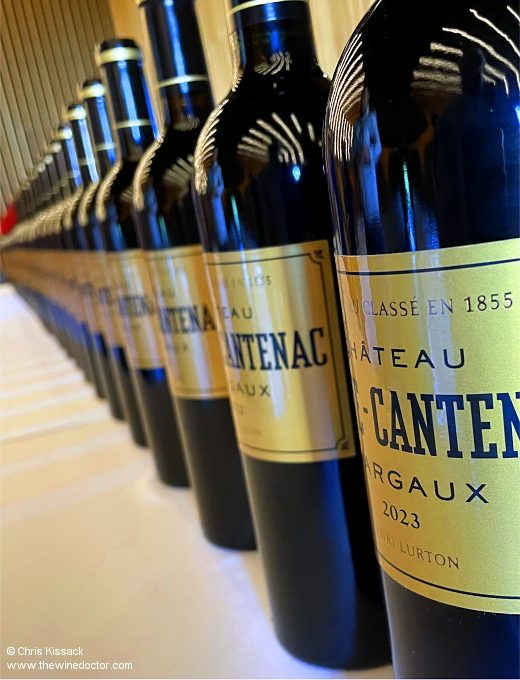Brane Reborn: Château Brane-Cantenac, 1928 – 2023
Jean-François had a dilemma.
We should probably start by establishing the identity of this particular Jean-François. Born in Branne, on the banks of the Dordogne below St Emilion, to a family of millers and brewers, this was Jean-François Léonce Récapet (1848 – 1943). Having said that, nobody ever called him Jean-François – everybody who knew him call him Léonce. Perhaps we should too.
Léonce had a dilemma.
Having completed his military service many years ago, Léonce had been glad to return home. He had joined the family business, taking a particular interest in a rather bijou distillery his father and uncle had recently established. They were producing a variety of liqueurs including anisette, a distinctive tasting distillation of aniseed, rather like modern-day Pastis. Business under the elder generation’s direction had been decent enough, but after Léonce took over in 1880 – aged just 22 years – things had really taken off. An innovator, visionary and born salesman, Léonce had revitalised the distillery’s range, and then rebranded with some eye-catching new labels.
Sales had rocketed, the money rolled in, and everyone had seen Léonce, an eligible and well-heeled bachelor businessman, in a new light. And when he eventually decided to settle down he chose well, taking the hand of Emma Thibaud (born 1872). Fourteen years his junior, she was the daughter of a local vigneron. Enthused by Emma, Léonce decided to invest in a vineyard; he bought Château Bonnet, in Entre-Deux-Mers, a beautiful estate which he and Emma used as their family home. Of course that was many years ago; his children were now fully grown, and had long flown the nest. And, now in his golden years, all was going well for Léonce.
But now, as I might have mentioned further up the page, he faced a dilemma.
One of Léonce’s recent business interests had been the Société de Grands Crus, through which he and his partners had acquired a number of prestigious Bordeaux properties. But now the business was being wound up, and its assets auctioned off, including Château Brane-Cantenac. And the dilemma was this; should he take advantage of this fire-sale, opening the door to a new adventure in life, as a private owner of a cru classé château, at the age of 67 years? Or should he be thankful for the success of his distillery and the life he had enjoyed thus far, and begin winding down?
Common sense told him to do the latter.
But when did common sense ever result in anything exciting?
Taking his trusty notebook from his pocket, he jotted a few words on one of the few remaining blank pages. Léonce was an inveterate note-taker, recording his thoughts and decisions on a daily basis. He scribbled a few pros on one side, a few cons on the other. At the bottom of the page he scrawled a single word.
Buy.
And so began the Récapet-Lurton era at Château Brane-Cantenac.
One Hundred Years Later
One hundred years have now passed since Léonce Recapet decided to purchase Château Brane-Cantenac in 1925.
A few weeks ago his great grandson Henri Lurton (born 1961) invited me (and maybe a few other individuals!) to Château Brane-Cantenac to mark the hundred years that have passed since this occasion. It is also just over thirty years since Henri took the keys of the château from Léonce’s grandson, and so the event was two-fold; a look back over the achievements of the last thirty vintages under Henri’s direction, and a reflection on a handful of much older vintages, made by prior generations during the family’s time in charge.

In this report I present tasting notes on wines made as recently as 2023, and as long ago as 1928. While my tasting notes are all presented below in the usual format, I will put the wines and notes into a greater historical context in this introduction, starting with the first vintage I tasted from Léonce’s era, 1928. What I will not do is provide a full history of the property from its origin through to modern-day; instead, I have just updated and expanded my profile of Château Brane-Cantenac, which I would contend is already the most complete summary of this estate available to read today, online or in print. Read the history there; continue with Léonce, his family and his wines, here.
Please log in to continue reading: